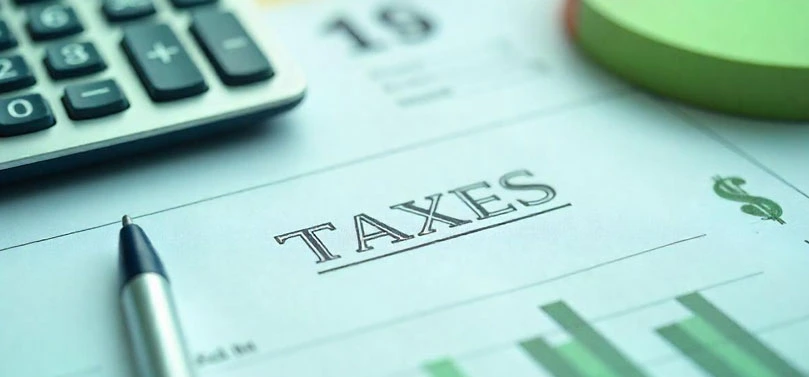On Thursday, March 11, 2021, the American Rescue Plan Act of 2021 (ARPA 2021) was signed into law. This is a $1.9 trillion emergency relief package that includes payments to individuals and funding for federal programs, vaccines and testing, state and local governments, and schools. It is intended to assist individuals and businesses during the ongoing coronavirus pandemic and accompanying economic crisis. Major relief provisions are summarized here, including some tax provisions.
Recovery rebates (stimulus checks)
Many individuals will receive another direct payment from the federal government. Technically a 2021 refundable income tax credit, the rebate amount will be calculated based on 2019 tax returns filed (or on 2020 tax returns if filed and processed by the IRS at the time of determination) and sent automatically via check, direct deposit, or debit card to qualifying individuals. To qualify for a payment, individuals generally must have a Social Security number and must not qualify as the dependent of another individual.
The amount of the recovery rebate is $1,400 ($2,800 if married filing a joint return) plus $1,400 for each dependent. Recovery rebates start to phase out for those with an adjusted gross income (AGI) exceeding $75,000 ($150,000 if married filing a joint return, $112,500 for those filing as head of household). Recovery rebates are completely phased out for those with an AGI of $80,000 ($160,000 if married filing a joint return, $120,000 for those filing as head of household).
Rebate Amounts and Phaseout Ranges
| Filing Status | Payment Amount | Phaseout Threshold | Phaseout Completed |
| Married Filing Jointly | $2,800 | $150,000 | $160,000 |
| + 1 Child | $4,200 | $150,000 | $160,000 |
| + 2 Children | $5,600 | $150,000 | $160,000 |
| Head of Household | $1,400 | $112,500 | $120,000 |
| + 1 Child | $2,800 | $112,500 | $120,000 |
| + 2 Children | $4,200 | $112,500 | $120,000 |
| All Others | $1,400 | $75,000 | $80,000 |
Unemployment provisions
The legislation extends unemployment benefit assistance:
- An additional $300 weekly benefit to those collecting unemployment benefits, through September 6, 2021
- An additional 29-week extension of federally funded unemployment benefits for individuals who exhaust their state unemployment benefits
- Targeted federal reimbursement of state unemployment compensation designed to eliminate state one-week delays in providing benefits (allowing individuals to receive a maximum 79 weeks of benefits)
- Unemployment benefits through September 6, 2021, for many who would not otherwise qualify, including independent contractors and part-time workers
For 2020, the legislation also makes the first $10,200 (per spouse for joint returns) of unemployment benefits nontaxable if the taxpayer’s modified adjusted gross income is less than $150,000. If a 2020 tax return has already been filed, an amended return may be needed.
Business relief
- The employee retention tax credit has been extended through December 31, 2021. It is available to employers that were significantly impacted by the crisis and is applied to offset Social Security payroll taxes. As in the previous extension, the credit is increased to 70% of qualified wages, up to a certain maximum per quarter.
- The employer tax credits for providing emergency sick and family leave have been extended through September 30, 2021.
- Eligible small businesses can receive targeted economic injury disaster loan advances from the Small Business Administration. The advances are not included in taxable income. Furthermore, no deduction or basis increase is denied, and no tax attribute is reduced by reason of the exclusion from income.
- Eligible restaurants can receive restaurant revitalization grants from the Small Business Administration. The grants are not included in taxable income. Furthermore, no deduction or basis increase is denied, and no tax attribute is reduced by reason of the exclusion from income.
Housing relief
- The legislation allocates additional funds to state and local governments to provide emergency rental and utility assistance through December 31, 2021.
- The legislation allocates funds to help homeowners with mortgage payments and utility bills.
- The legislation also allocates funds to help the homeless.
Health insurance relief
- For those who lost a job and qualify for health insurance under the federal COBRA continuation coverage program, the federal government will generally pay the entire COBRA premium for health insurance from April 1, 2021, through September 30, 2021.
- For 2021, if a taxpayer receives unemployment compensation, the taxpayer is treated as an applicable taxpayer for purposes of the premium tax credit, and the household income of the taxpayer is favorably treated for purposes of determining the amount of the credit.
- Persons who bought their own health insurance through a government exchange may qualify for a lower cost through December 31, 2022.
Student loan tax relief
For student loans forgiven or cancelled between January 1, 2021, and December 31, 2025, discharged amounts are not included in taxable income.
Child tax credit
- For 2021, the credit amount increases from $2,000 to $3,000 per qualifying child ($3,600 for qualifying children under age 6), subject to phaseout based on modified adjusted gross income. The legislation also makes 17-year-olds eligible as qualifying children in 2021.
- For most individuals, the credit is fully refundable for 2021 if it exceeds tax liability.
- The Treasury Department is expected to send out periodic advance payments (to be worked out by the Treasury) for up to one-half of the credit during 2021.
Child and dependent care tax credit
- For 2021, the legislation increases the maximum credit up to $4,000 for one qualifying individual and up to $8,000 for two or more (based on an increased applicable percentage of 50% of costs paid and increased dollar limits).
- Most taxpayers will not have the applicable percentage reduced (can be reduced from 50% to 20% if AGI exceeds a substantially increased $125,000) in 2021. However, the applicable percentage can now also be reduced from 20% down to 0% if the taxpayer’s AGI exceeds $400,000 in 2021.
- For most individuals, the credit is fully refundable for 2021 if it exceeds tax liability.
Earned income tax credit
For 2021 only:
- The legislation generally increases the credit available for individuals with no qualifying children (bringing it closer to the amounts for individuals with one, two, or three or more children which were already much higher).
- For individuals with no qualifying children, the minimum age at which the credit can be claimed is generally lowered from 25 to 19 (24 for certain full-time students) and the maximum age limit of 64 is eliminated (there are no similar age limits for individuals with qualifying children).
- To determine the credit amount, taxpayers can elect to use their 2019 earned income if it is more than their 2021 earned income.
For 2021 and later years:
- Taxpayers otherwise eligible for the credit except that their children do not have Social Security numbers (and were previously prohibited from claiming any credit) can now claim the credit for individuals with no qualifying children.
- The credit is now available to certain separated spouses who do not file a joint tax return.
- The level of investment income at which a taxpayer is disqualified from claiming the credit is increased from $3,650 (as previously indexed for 2021) to $10,000 in 2021 (indexed for inflation in future years).



